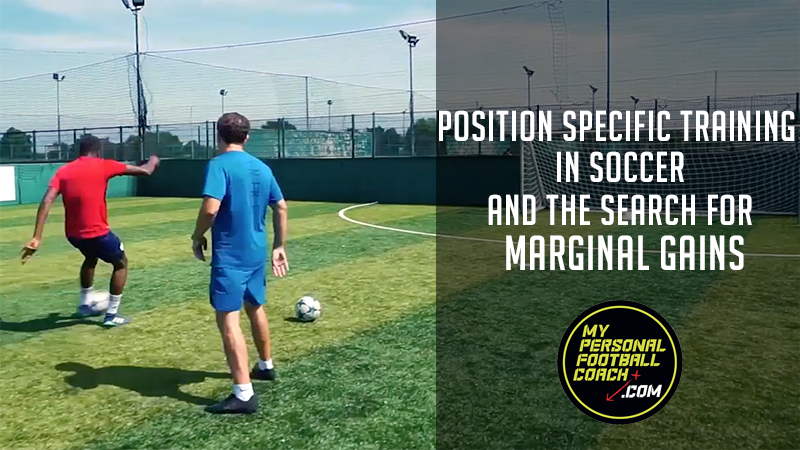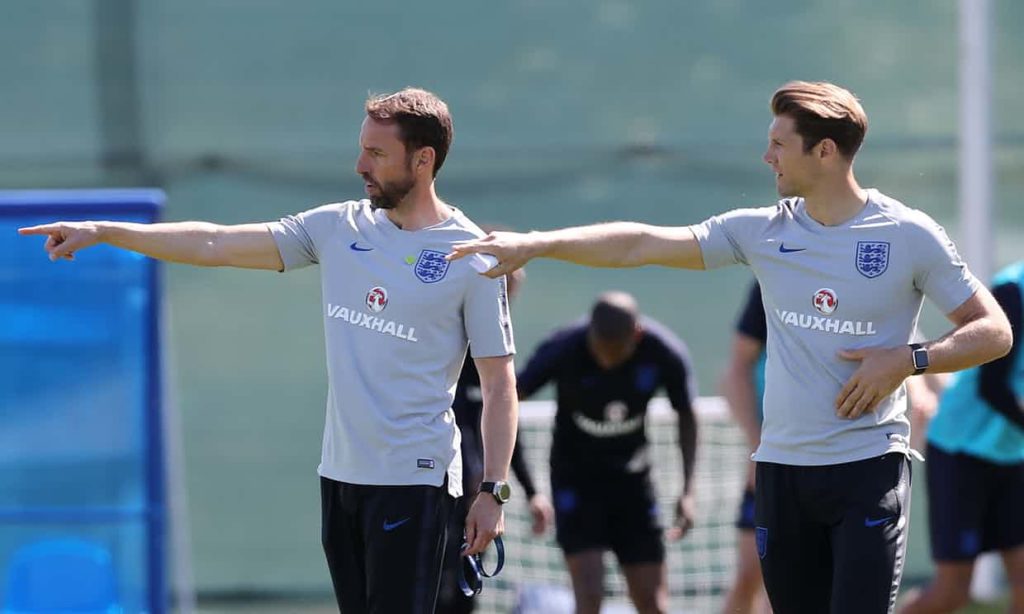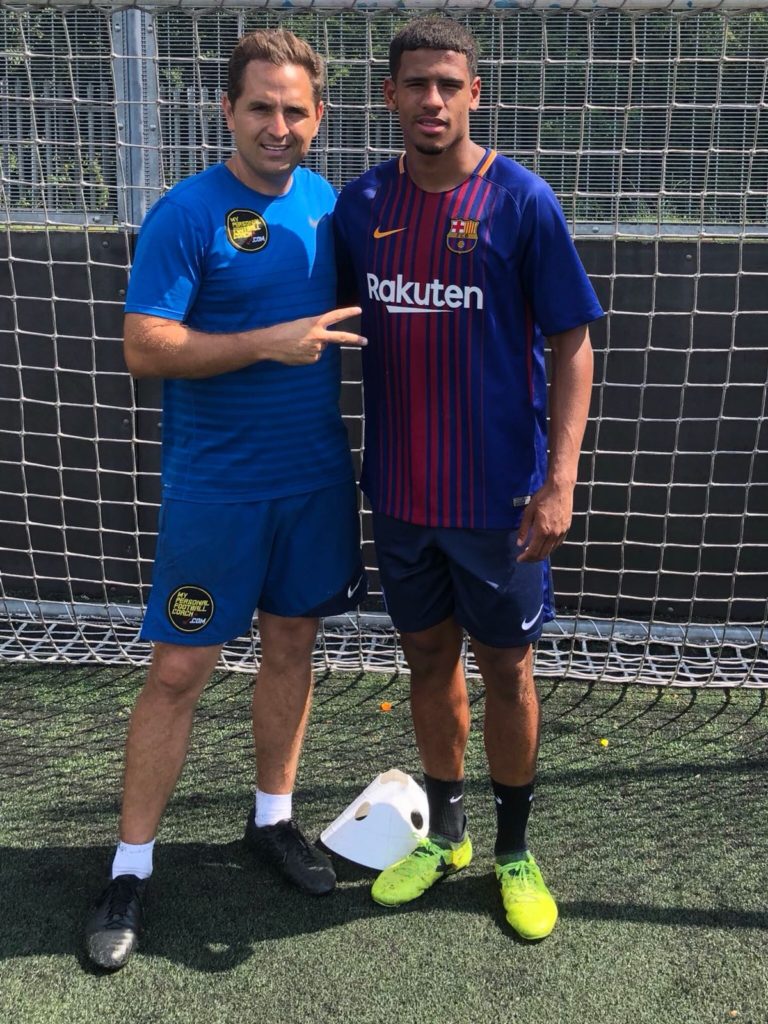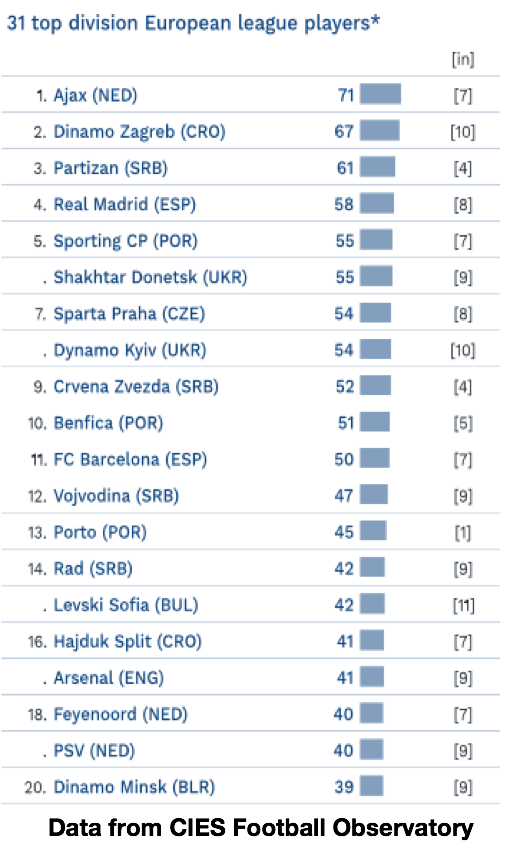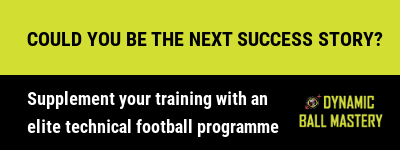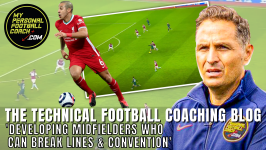Saul Isaksson-Hurst is an experienced premier league academy coach having spent 6 years at Tottenham Hotpsur FC and 4 years at Chelsea FC’s Academy as a Foundation Phase skills specialist and is founder of mypersonalfootballcoach.com where he is director of coaching. In this post, Saul reflects on Striker Coach Alan Russel’s success in the England camp at the World Cup, Saul also speaks about his own experience as a technical coach working with some of the worlds best talents in pre-season this summer.
After a refreshingly successful England world cup campaign with a very young squad I think its important to reflect and applaud the approach taken by Gareth Southgate. As was shown by the meticulous approach to the penalties, this is not as we have seen a lottery, but a test of skill under pressure.
Another effective strategy was the appointment of Alan Russell as a striker coach. Alan, an individual coach like myself has made his name working with professionals to improve their game in front of goal.
For a long time, I have argued that position specific individual training is key to challenge, support and develop players. As we learn from all sports, marginal gains are key at the elite level and giving our players the best chance to be successful by preparing them for the game is vital.
It was great to see Alan’s success as a striker coach for England at the world cup. You could see he made a big impact on the England team this summer.
In the last few weeks I have worked with Pro’s form Arsenal, Barcelona, Chelsea, Tottenham Hotspur, Crystal Palace and Fulham. When working pro’s its always vital to make the sessions position specific, every practice is linked to the game, everything we do is microcosmic example of what we anticipate will happen in match. With this in mind it is important to remember that there is a purpose to what ever we do. Sometimes I use skill combinations (various 1v1 skills) to challenge and develop the players movement on the ball. Everything else within the sessions will be directly linked to the actual games. For instance, working with Barcelona and England’s Marcus McGuane recently, Marcus wanted to improve his play with his back to goal and pressure. We worked a lot on movements to firstly get on the ball and then to get beyond players, always with a shot or pass on the end, its vital that we always include this if possible. Many people misunderstand individual training, claiming its not a ‘dynamic learning environment’, nothing could be further from the truth, individual session have to be dynamic in order to make them deliberate practice. Also, we are never just working on 1 area, i.e shooting (unless players are at the start of their journey) we will always work on, receiving, turning and shooting for instance. Also, this isn’t a linear process, I’m never imposing moment patterns on players and its always a collaboration. Working with the player to supporting them in finding the solutions that best suit them. This also, importantly this training isn’t designed to replicate the game, its there always to supplement it.
I still think this is an area that isn’t exploited both at Academy and Professional level. Working with a client from a Premier League club recently he mentioned that ‘we just don’t get this type of technical work at the club’. Whether your’e a newcomer to the game or an experienced pro, individual time on the ball is key.
FC Barcelona’s Marcus McGuane was one of many professional players I trained with during this years pre-season.
We live in a time of extremism in all walks of life, opinion on social media is no different. We have ‘specialist’ calling for everything in a game setting. This nirvana for me is a fallacy, as 1 there is no empirical research to suggest this is true, also if we look at all sports and the elite performers they all train away from the game on perfecting their technique. Whether it is Steph Curry firing in shots, Connor McDavid practicing his handling and shooting, Luka Modric his receiving and turning or Tom Brady his distribution, they all do it…The question isn’t should we train unopposed or away from the game but where and when is it most effective and also how do we make it deliberate practice and cognitively challenging (not automatic where layers switch off). This is the key for me and is where the misunderstanding comes.
This Pre-Season I have been working with a Premier League player who is also an full international full back. He wants to work on play both in and out of possession. Its a great challenge for me working with all of these players, they are far greater ability than I could ever have dreamed of. With this player we worked on attacking movements of a full back. Looking for patterns and similarities of the best players in the world in that position. Now its impossible to predict what will exactly happen in a game or how opposition players will react. You can however look for patterns in player movements and particularly in 1v1 situations. This is where the position specific model comes in. As you look at what has made players successful in the past. You train these elements and movements in isolation building up pressure. The player then takes this into training and game situation. Now I anticipate this will make some coaches squirm as they say, ‘no, no it doesn’t transfer” the problem is it does. This is why Pro’s train this way, so their Ball Mastery becomes innate, into their subconscious and they can then play with their head up. This is only small part of the developmental plan but an important and significant one.
Many people assume that the higher level the player the less technical work away from the game is needed. Lemov et al (2012) actually argues the opposite is true saying that the higher the level of player actually the more important working away from the game is.
Most interestingly enough Lemov set out the benefits of working away from the game and acknowledges that arguing in favour of more drilling goes against many educators thinking, that learning that asks students to memorise and automate will reduce their ability to generate creative thoughts and make cognitive leaps.
The problem with this argument is that learning generally doesn’t work this way. Its all but impossible to have higher order thinking without strongly established skills…cognitive leaps, intuition, inspiration – the stuff of vision- are facilitated by expending the smallest possible amount of processing on lower-order aspects of a problem and reapplying it at higher levels. (Lemov et al 2012)
Lemov argues that training in this way actually generates a higher level of thinking and encourages creativity in the game.
This in the football context is players being able to play with their heads up, players who are so comfortable on the ball that the game opens up to them. The vision to change the game with a defence splitting pass or a 1v1, the ability to do this as they are not fighting with the ball or treating it like a hot potato because the only contact they have with a ball is in a game environment and they never normally take more than two touches. This is why the best academies in world football have Ball Mastery as a key strain of their methodology. Iv’e recently visited Ajax and Dinamo Zagreb, the two most prolific academies in world football and I have seen first hand the importance of technique and ball mastery in an unopposed environment. (fig 1 )
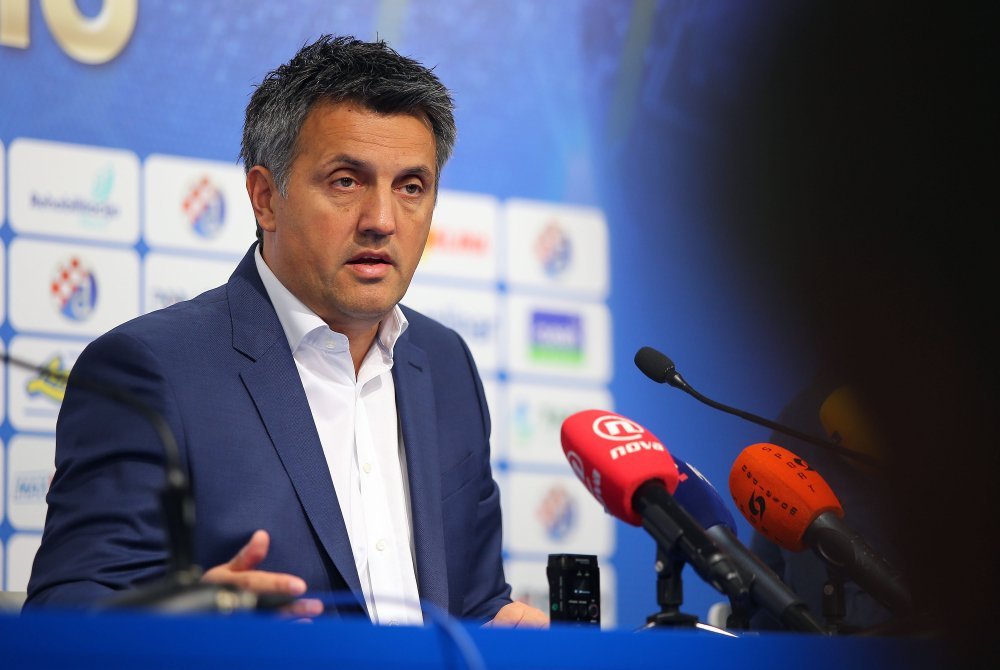
Romeo Jozak PhD who was formerly Head of Academy at Dinamo Zagreb and Technical Director of the Croatian Football Federation (check out my interview with Romeo here) argues a similar point in his excellent Croatian Football Federation Development Curriculum (2018)
Romeo argues, automatism or knowledge which is stored in the in the subconscious mind does not limit creativity. On the contrary, automatism is what enables and enhances a greater expression of creativity and a faster and better decision making process.
Jozak goes on to argues that players with a limited technical tool box will have restricted ability during games to make or carry out decisions.This results in a low quality output. Jozak argues to “facilitate the highest possible number of automatism through appropriate exercises. I saw this first hand on my visit to Dinamo Zagreb (check out my detailed analysis here) with an intense focus on technical development throughout the Academy, one that I had not ever seen before. In all age groups, the game broken down to its smallest parts with intensive deliberate practice alongside the complexity of games…the recipe that has made Dinamo Zagreb one of the best most consistent player development centres in world football.
As with everything we do in football there must be a reason and we must know what outcomes we are looking for. Most importantly, what ever level players you are working with as well as being fun, make sure your sessions are challenging and cognitively engaging, this in my opinion where most coaches get it wrong as often when they set up position specific or drill like practices players can switch off, or go through the motions. This is where the effectiveness of these wanes. It is possible and essential to make this work cognitively challenging and therefore qualifying as deliberate practice. Also when working on position specific training make sure its always linked and goes hand on hand with the actual game, only then we will see this much sought after marginal gains…
Mater the Ball Master the Game

